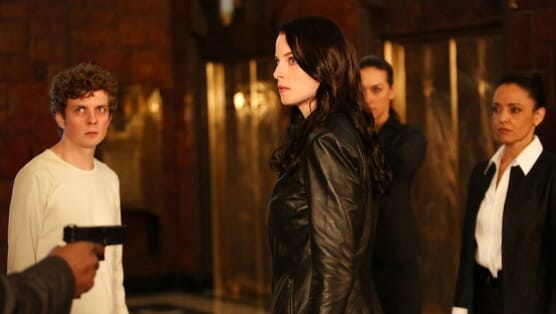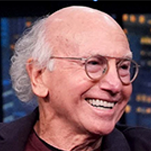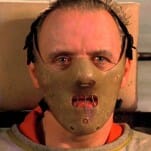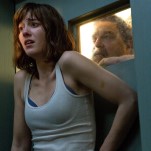Continuum: “The Dying Minutes”
(Episode 3.12)

Here’s a savvier, trend-bucking sequence: separate strands of plot in “The Dying Minutes” lead to paralleled infiltration setpieces. Kiera leads Brad, disguised as her prisoner, into the Freelancers layer in one; Dillon, Carlos, Piron in the other. Kiera told Catherine she’d trade Brad for Alec, but it’s only confirmed as a trick moments before she and her dreamy squatter knock on the door. Similarly, we’re suspicious of Dillon inviting Carlos to “see the lab.” This is partially attributed to the direction (creator Simon Barry wrote and helmed the episode). Barry allows Dillon to leave the frame, Carlos following in the background, as he enters the building, suggesting he’s leading Carlos to some place we can’t see or anticipate. Everything feels like a trap.
Only one of them turns out to be, but the reveal is through misdirection. Carlos isn’t the only one at Piron with a visitor’s badge. After sending a Piron techy into hormonal fits over a coffee request, Sonya uploads a HALO virus. Her half of the setup is coy: Piron’s most sophisticated facial recognition software is Matthew Kellog? But the end game is effective—and the misdirection isn’t over. With her hands on her head, Carlos waving off Dillon’s hotter guns, we notice Sonya’s overcoat. She wasn’t wearing it before. Now it covers her body. Overcoat plus terrorist equals: How wide’s the blast radius? But Carlos cuffs her. They bring her in. Kiera, whose Operation I F’d Up was a success, sits in on Dillon’s interrogation briefly. He shoos her away. She share her apprehensions about Dillon’s power with Carlos. Finally: the boom.
-

-

-

-

-

-

-

-

-

-

-

-

-

-

-

-

-

-

-

-

-

-

-

-

-

-

-

-

-

-

-

-

-

-

-

-

-

-

-

-








































